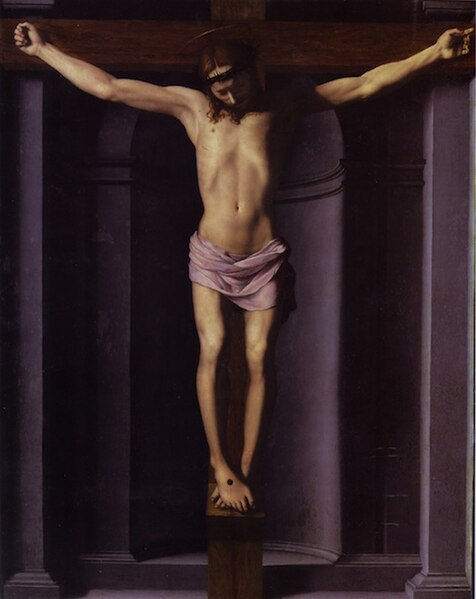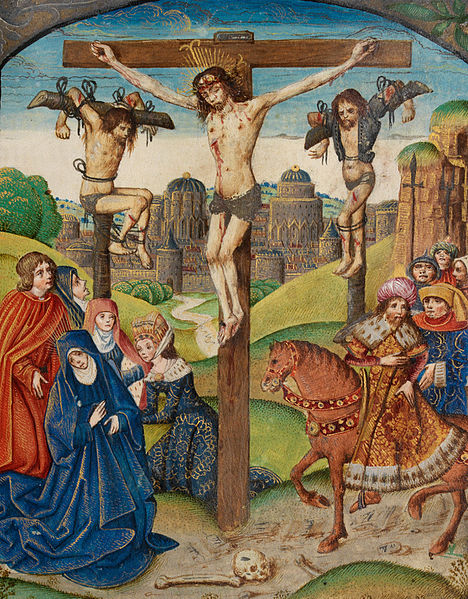The crucifixion darkness is an event described in the synoptic gospels in which the sky becomes dark in daytime during the crucifixion of Jesus for roughly three hours. Most ancient and medieval Christian writers treated this as a miracle, and believed it to be one of the few episodes from the New Testament which were confirmed by non-Christian sources. Modern scholars have found no contemporary references to it outside the New Testament.
Christ on the Cross, 1870, by Carl Heinrich Bloch, showing the skies darkened
Khamsin dust storm in Egypt in 2007
The earliest crucifixion in an illuminated manuscript, from the Syriac Rabbula Gospels, AD 586: note the Sun and Moon in the sky.
The crucifixion of Jesus was the execution by crucifixion of Jesus of Nazareth in 1st-century Judaea, most likely in AD 30 or AD 33. It is described in the four canonical gospels, referred to in the New Testament epistles, attested to by other ancient sources, and is broadly accepted as one of the events most likely to have occurred during his life. There is no consensus among historians on the details.
Christ Crucified (c. 1632) by Diego Velázquez
A depiction of the Raising of the Cross, by Sebastiano Mazzoni, 17th century, Ca' Rezzonico
Bronzino's depiction of the crucifixion with three nails, no ropes, and a hypopodium standing support, c. 1545
Christ on the Cross between two thieves. Illumination from the Vaux Passional, 16th century







